Loom Network Review: Blockchain Platform for Gaming dApps
The Loom Network is quite a unique project that is vying to be the premier Ethereum based gaming and social app development platform.
There have already been a number of developers that have build their own gaming dApps on the Loom Network. This has increased broader adoption of the network although this has not so far translated into buying demand for their LOOM token.
So, should you consider it?
In this Loom Network review, I will give you everything that you need to know about the project. I will also analyse the use cases and adoption potential of LOOM tokens.
What is the Loom Network?
The company claims to already have an Ethereum based infrastructure that is scalable, faster, and more stable than anything previous developed. Using the Loom Network, and the tools being developed by their team, developers could create global social applications, and massive gaming worlds similar in size and scope to World of Warcraft and similar MMORPGs.
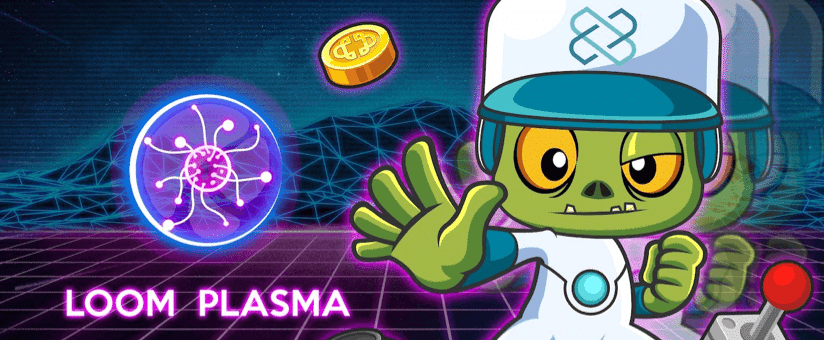
Building DApps for gaming purposes is perfectly suited to tradable tokens. Games built from the Loom Network platform would have these features:
- Provably scarce items
- Tradable tokens
- Eternal worlds
- Multi-game-spanning universes
Social apps developed using this platform would also be unique from the traditional social apps. Imagine the following features:
- No advertising
- Monetized with karma tokens
- Expandable through multiple-client apps
- Minimization of trust
Who Is the Loom Network
The Loom Network was founded by Matthew Campbell, Luke Zhang, and James Duffy in 2017 as a Platform as a Service (PaaS). It allows decentralized applications (DApps) created using the Solidity programming language to run on the Ethereum blockchain.
The company has already seen success with its CryptoZombies project. This is a gamified learning tool used by developers who want to write smart contracts. Through a series of interactive tutorials the developers build their own crypto-collectible Zombie game (think of CryptoKitties but with Zombies), and at the same time learn how to write smart contracts.
The project was launched in September 2017 and within 6 months it had over 130,000 developers using it to learn how to write smart contracts using Solidity. As of August 2019, more than 300,000 developers have used CryptoZombies to learn smart contract programming.
Other projects developed by the company include:
DelegateCall: Earn tokens by posting and answering questions!
EthFiddle: #1 Solidity code sharing site
SolidityX: Secure-by-default programming language that compiles to Solidity
Relentless: Relentless is a groundbreaking (digital) card game that lets you collect, control, and ACTUALLY own your cards - for real.
Speed and Scalability on Ethereum
Any decentralized blockchain network is reliant on the speed at which information is transmitted. With a global network of computers enabling tamper-resistant and transparent record keeping it’s critically important that the network has the speed and capacity to handle an increasingly large number of transactions effortlessly.
Due to the way that most blockchains have been developed, speed and scalability have taken a backseat to security, leading to speed and scalability issues for nearly all the current blockchain networks.
We all saw this in December 2017, when the launch of the virally popular CryptoKitties game brought the Ethereum network to a crawl as the number of transactions demanded by the network soared. Verifications became increasingly delayed, and network transaction fees spiked higher as a result.
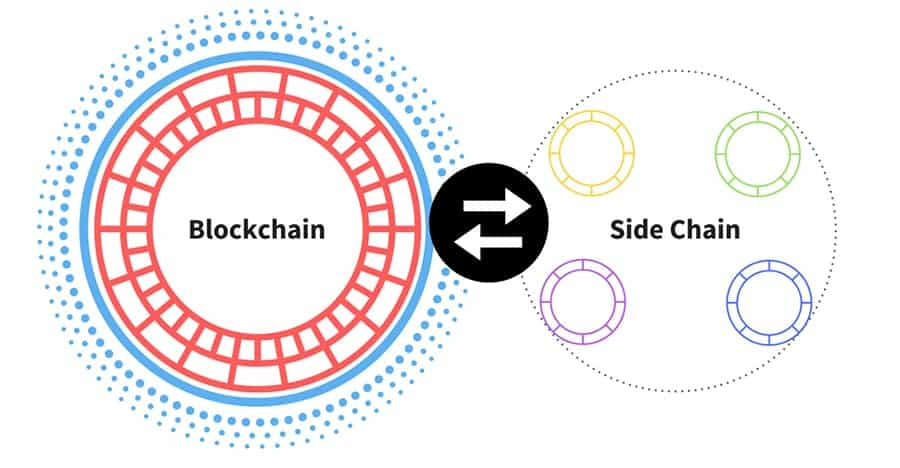
The Loom Network has created their infrastructure in such a way as to avoid these speed and scalability issues. They believe that they can incentivize developers to build new DAapps and smart contracts by providing greater computing power, lower costs, and a network infrastructure that can handle any number of transactions.
One such use case would allow developers to use third party APIs that aren’t even on the blockchain. This means a developer could connect to Google Authenticator to use their 2-factor authentication service as part of the DApp they create.
Used in such a manner, the blockchain becomes the storage center for user data. Because it’s a decentralized network there is no chance for servers to be shut down by a centralized authority. Instead the community will have the final say over any DApps running on the blockchain, creating a pure form of digital democracy.
In a recent interview with VentureBeat, Duffy said he foresees a future where the Internet is composed of large-scale decentralized applications owned by the community, that are transparent and
immune to censorship or control from a single party.
Loom Network DAppchain Development
The network has been able to dramatically increase the scalability of the blockchain by creating sidechains for each DApp – which they call a DAppChain – and it can run side-by-side with Ethereum smart contracts.
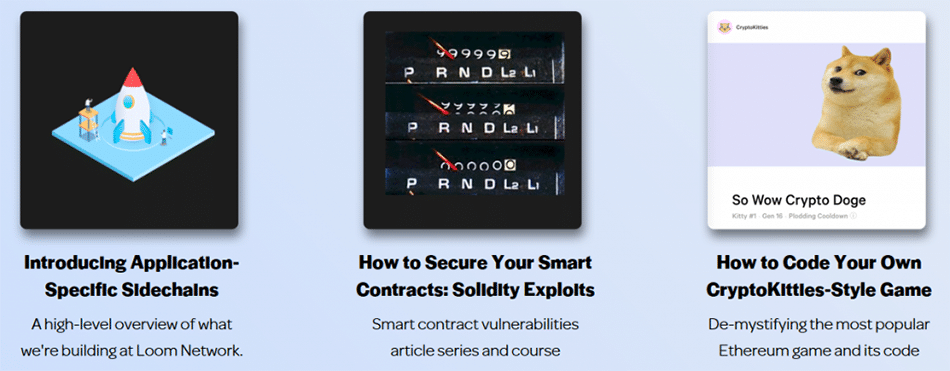
According to the Loom Network, this infrastructure would be capable of running a million CryptoKitties simultaneously. And it would do so without the slightest network congestion, speed issues, or impact on any other network transactions.
This creates the possibility of running large scale Ethereum blockchain based apps without worrying about keeping the network decentralized, scalability, or even third party censorship.
Making things even more interesting is the software development kit (SDK) created by Loom Network, which will effectively allow developers (and soon non-developers) to rapidly code and deploy an Ethereum blockchain based DApp without becoming a blockchain expert first.
DApps Running on the Loom Network
The Loom Network has been adding new games at an increasing rate in 2019, so you might be interested to know about some of the games that are launched on the Loom Network, that are in development, or are being ported from other blockchains to Loom.

Below are some of the most exciting dApps that are currently being built on the Loom Network.
Neon District
Neon District is being billed as a post-apocalyptic turn-based strategy game. It’s still in development, so not much is known about the game. We do know that the game will be set in the future, and have a dark theme, and incredible graphics. It’s being developed by the same team that created Plasma Bears and Pineapple Arcade, both of which were hits.
Axie Infinity
Axie Infinity is a collectible battle creature game featuring the cute Axie creatures. Axies can battle, and they can be bred to create new Axies. Most importantly for some, they can also be sold in the Axie marketplace, where the top selling Axie had a price of 110 ETH! There are already more than 88,000 Axies created, and the developers plan on creating new environments, story mode and a crafting system.
Coins & Steel
Coins & Steel is still in development, but plans on being an immense MMORPG where you can battle, craft, breed pets, adventure, and all of it will be on the blockchain. Every digital asset will have a value, and you will be able to trade, buy and sell in the marketplace.
The Loom Network Team
There is no information posted on the Loom Network website regarding the team, but they do have a presence on LinkedIn, where you can see 35 employees listed. Co-founder Matthew Campbell is still with the project as the CEO, and James Duffy is the Chief Marketing Officer at the Loom Network.

It isn’t that Loom is trying to hide their team members, rather they just aren’t putting any focus on the team, preferring to let the development of the project speak for itself. The Loom Network is based in Bangkok, Thailand and previously secured $25 million in funding from The Ventures, a China-based venture capital firm.
The LOOM Token
The LOOM token is used to power the smart contracts and dApps running on the Loom Network. It is an ERC-20 token, and has also been integrated with Binance Chain so it can be used as a BEP-2 token. There are no plans to make LOOM a native token at this time.
This past February 2019 LOOM staking went live, and users are now able to stake their LOOM tokens to receive a portion of network fees earned by the validating nodes. The latest information indicates that LOOM holders can earn up to 20% annually through staking their LOOM. One focus of the LOOM team is to keep staking valuable to increase the amount of total LOOM that is being staked.
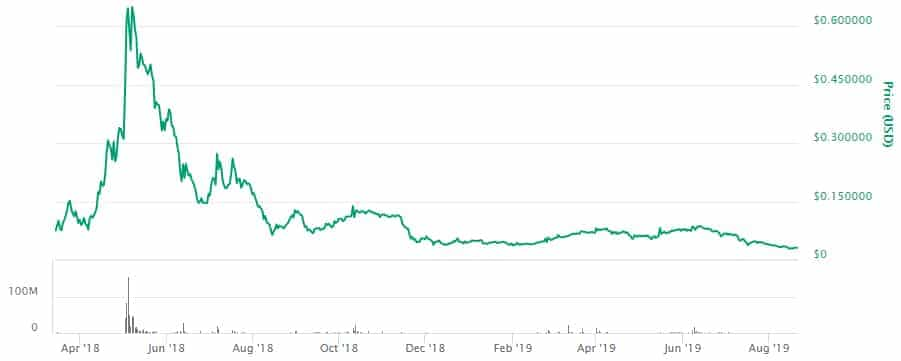
LOOM is also a bit unique in that the team never held a public ICO. Instead their was a private funding round held in January 2018, in which the team sold 750 million LOOM tokens at $0.076 each and raised $45,810,000.
While LOOM did hit an all-time high of $0.774454 on May 4, 2018, it has since fallen sharply off those highs. As of August 18, 2019, the LOOM token hit an all-time low of $0.026082.
Buying & Storing LOOM
The LOOM token is available on a large number of exchanges, including Binance. The greatest trading volume is on the LATOKEN exchange, and there’s also a good amount of trade volume at the Bilaxy exchange.
Although the LOOM token is listed on all these exchanges, something that I did find slightly concerning was the relatively low levels of turnover on each of these order books. This could limit liquidity for the token and hence make it harder to execute larger block orders.

Since LOOM is an ERC-20 token it can be stored in any ERC-20 compatible wallet. It also has support for BEP-2 wallets if converted, and both the Ledger and Trezor hardware wallets support LOOM. In addition, the team has recently released a native LOOM wallet that can be used to store LOOM.
Loom Development
Determining exactly how much work has been done on a project can sometimes be difficult to ascertain. There is often a disconnect between what is reported and the actual number.
For me, the proof is often in the pudding.
One of the best ways to get a rough idea of development work is to take a look at their public code repositories and observe the coding activity.
Hence, I decided to jump into the Loom Network's GitHub and take a look at their recent commits. Below are the total commits to their top three pinned repositories over the past year.
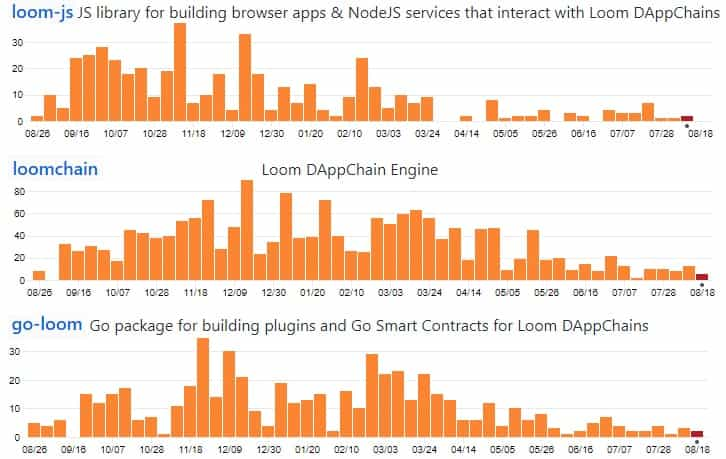
As you can see, there has been a lot of activity in these repositories. It is also worth pointing out that there are over 95 other repositories in their GitHub - so quite extensive.
This is more activity than I have seen at a number of other projects. It shows that the developers are actively building out the protocol and refining the technology.
This frenetic pace of development activity makes sense when viewed in the context of the broader project roadmap. There are exciting things in the pipeline including everything that comes with Plasmachain.
If you wanted to keep up to date with the development then you can always follow their official blog or their Twitter.
Conclusion
Just as scalability is becoming one of the largest issues in blockchain technology, the Loom Network is developing a solution and applying it to the massively popular gaming and social networking spheres.
As gaming on the Ethereum blockchain continues gaining popularity, Loom Network is poised to become the Unity of blockchain game development. This is especially true as they add support for Ethereum and Tron dApps already, and have plans on adding EOS and more to become a universal Layer 2 blockchain.
Not only could this create the future of internet and blockchain based gaming, but by enabling the creation of eternal universes that see multi-game spanning DApps and collectible provably scarce items, Loom Network could be creating what will be an immense financial incentive to both develop and play in these new universes.
Consider too the possibilities of a social network that pays its users rather than making them pay by giving up their personal details to satisfy advertisers. This is the new blockchain powered social network and gaming environment we could see in the coming years.
Finally, Loom Network has recently announced they are entering the Decentralized Finance (DeFi) space, and has several applications already on the drawing board that will make the Loom Network increasingly valuable not only for gaming, but also in the realm of finance.
Disclaimer: These are the writer's opinions and should not be considered investment advice. Readers should do their own research.
Disclaimer: These are the writer’s opinions and should not be considered investment advice. Readers should do their own research.
